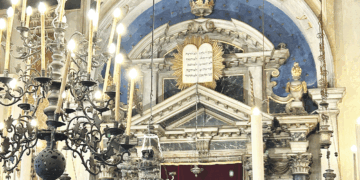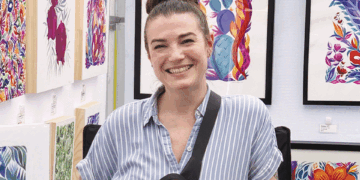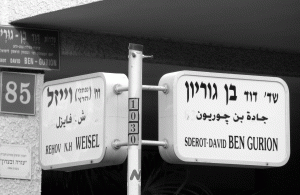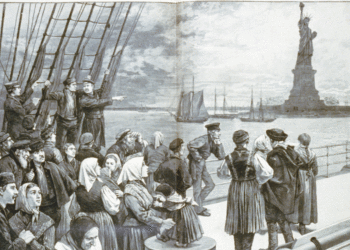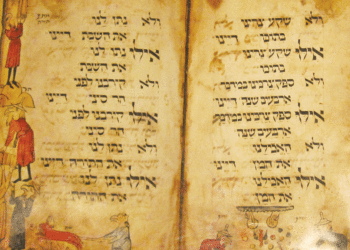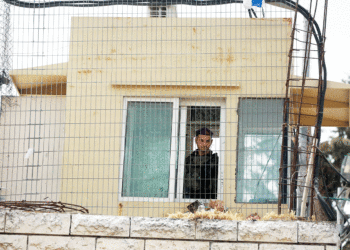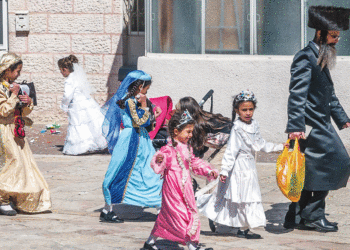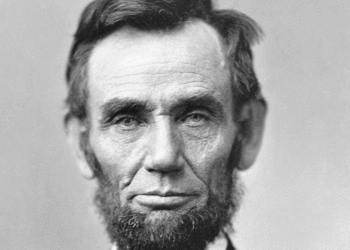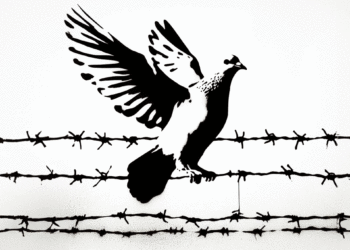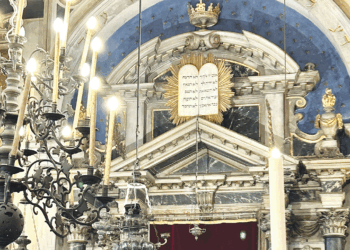Many of the city’s street names presuppose knowledge of and investment in Jewish culture
By MOSHE GIT
It is a bit difficult for me to write on Tel Aviv objectively, because for me Tel Aviv isn’t an object, it is me. I was born and raised in Tel Aviv and every nook and cranny there not only speaks to me, it is a part of me, so much so that when changes occur, I feel personally involved and, at times, hurt.
One of my peeves is the practice of altering street names. Names provide character; they provide association. The street on which David Ben-Gurion lived was called Sderot Keren Kayemet (JNF Boulevard); but after his death, it was converted to Sderot Ben Gurion. I still call it by its original name. (Can’t they find some new streets to name after Ben Gurion?) I still refer to Kikar Malchei Yisrael (Kings of Israel Square), despite the fact that the city changed it to Rabin Square, after the Israeli prime minister was assassinated there.
Tel Aviv symbolizes the Jewish people awakening to the dream of rebuilding their own state. Jewish history and culture, and more contemporary Zionist aspirations come alive when you walk the streets of Tel Aviv. In fact, many of its street names presuppose knowledge of and investment in Jewish culture.
Take, for example, the street called Tarsat near the Habima theater building. How many AJW readers can figure the meaning of this word? TARSAT — made up of the Hebrew characters taf-reish-samech-teit — is the year 5669 in the Hebrew calendar. It is the year in which Tel Aviv was founded. So Tel Aviv is a hundred years old. (The current year is TASHSAT, where shin replaces reish, which is a hundred years later).
The story of Tel Aviv began a hundred years ago, when several dozen Jewish residents of the historic port city of Yafo (Jaffa), which was mostly Arab, decided to build a modern Jewish town. They chose an uninhabited area, a couple of miles to the north and east, subdivided it, drew lots, and began building their homes.
The southern end of the new settlement abutted the railway line that led from Jaffa on the Mediterranean coast to Jerusalem in the east. Tel Aviv’s main road, which spread northward from the rail line, was aptly named Herzl, after the founder of Zionism, who had passed away just five years earlier. At the other end of Herzl, about half a mile to the north, blocking the street, the settlers built their school building, which they named Herzliya. They were proud of the school and its unique architecture and hoped that train passengers would be impressed when they saw the building from the train windows.
Years later, the landmark building succumbed to the wrecking ball, since the school building was blocking the extension of the Herzl thoroughfare further north, causing traffic jams. The 34-story Migdal Shalom, then the tallest building in the Middle East, was built on the school’s site. A passageway underneath the building enabled traffic to pass further north. However, by the time Migdal Shalom was completed, the entire Old Town area was overtaken by growth in all directions and became largely insignificant.
Another main Old Tel Aviv street was Rothschild Boulevard, which crossed Herzl. It was made of two parallel one-way lanes, and the area in between was lined with trees and benches for people to stroll on and to enjoy. This street is well imbedded in my memory.
A number of weeks ago, I saw that the AJW’s Web page included a brief video of Rothschild Boulevard (ajwnews.com/archives/342). I immediately recognized the corner of the Bilu elementary school building.
When Danny Kaye, the late Jewish American comedian, visited Israel, he was invited to attend a service in that school’s synagogue. Apparently he got bored, or just wanted some attention, and in the middle of the service he uttered a long, strong whistle. He was mocked as one of those American Jews who were Jewishly ignorant. However, I thought of the Hasidic story about a Jew who on Yom Kippur, in the synagogue, uttered a whistle, and the rabbi then said that whistle managed to penetrate heaven.
As a toddler, I played many times on Rothschild Boulevard. Once, I started sprinting across the boulevard. My mother chased me. I ran into a yard and entered a house through its back door. It turned out that it was the family home of Eliyahu Golomb, the commander of the Haganah underground. He was standing wearing a Russian-style shirt. His mother handed me a cookie. A week or two later he passed away. Years later, the Golomb home was converted into the Haganah Museum (Beit Eliyahu). It is across the street, and not far from the home of Meir Dizingoff, Tel-Aviv’s first mayor, where, on May15, 1948, the state of Israel was declared by David Ben-Gurion.
After the Arabs of Jaffa fled — mostly to the Gaza Strip — during the 1948 war, that city was incorporated into Tel Aviv. In less than four decades, Tel Aviv and Jaffa exchanged roles. Jaffa became a suburb of Tel Aviv.
As soon as the guns became silent, my father took me on a walking tour of Jaffa. Many Tel Avivians who attempted to improve their living conditions staked claims to abandoned houses there. Also, many newcomers to Israel, most notably Bulgarian Jews, settled there. Signs in Bulgarian sprang up. The travesty of altering street names affected Jaffa as well.
Obviously, I can go on forever describing what Tel Aviv evokes in me. I believe I will never feel at home if not in Tel Aviv.
***
Moshe Git lives in Minnetonka.

